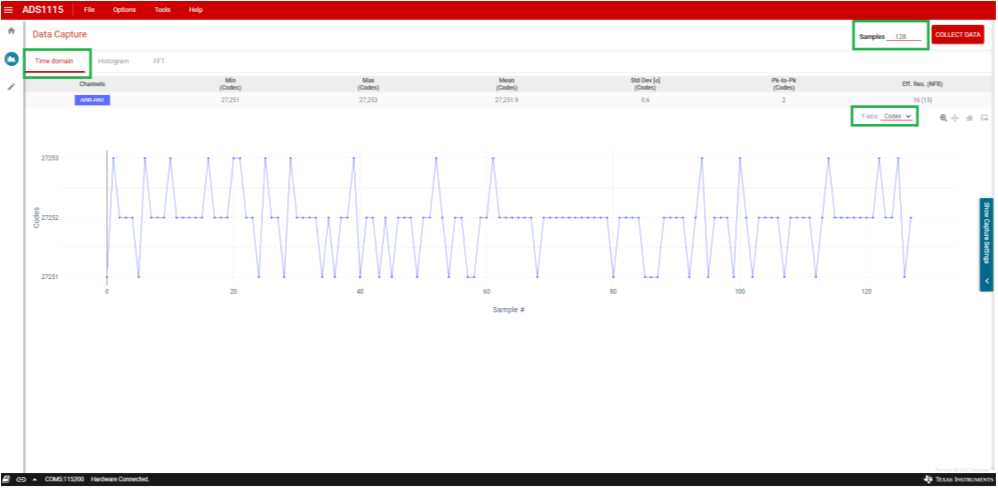SBAU362 March 2021 ADS1015 , ADS1115
5.2.2.2 Time Domain Plot
The Time Domain plot (shown in Figure 5-17) displays the sample count number in the X-axis. The Y-axis is displayed as either codes or volts with the selection in a drop-down menu. The Y-axis drop-down menu displays next to the charting icons near the right side of the GUI below the statistics.
 Figure 5-17 Time Domain Plot
Figure 5-17 Time Domain Plot